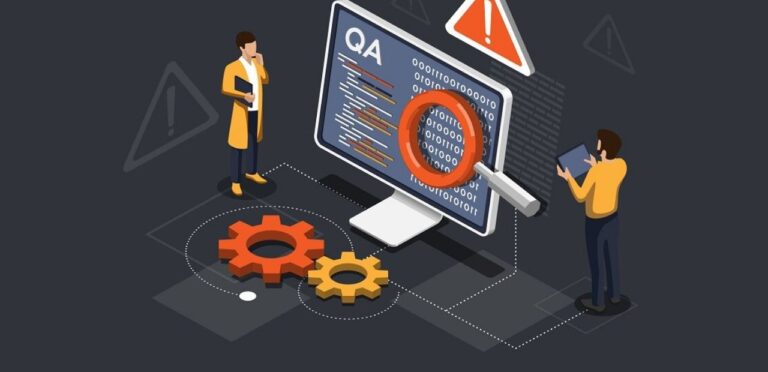Table of Contents
The technical debt is common for scalable and long-term software projects where the initially defined project scope may change like the range of system functions, fastened deadline to system delivery and launch, postponing some tasks for later execution, etc.
The main risk is growing technical debt is that it can grow into a hunger problem for the software solution with no possibility to fix it partially if you are going to resolve the issues in time. As a result, your system stops working correctly, providing lots of unfixable bags, unfeasible features, poor-quality code or legacy code that cannot be re-used.
No changes can be taken promptly and effectively, as the resolving of delayed tech debt can last for a long time, requiring much investment. Even if the technical debt doesn’t seem to be massive like project document updates, we ensure you will face more unrelieved troubles during the system maintenance and further upgrades than you think now.
So we are to start by figuring out what technology is in detail, the main causes of technical debt, how to address technical debt, and how to reduce technical debt during the development process.
What is technical debt?
Technical debt is the backlog of technical tasks during the software development process that appear due to the changing of priorities on the particular project.
Commonly, the software development process follows according to the initially defined plan, where each part of the solution functionality has particular requirements and strict deadlines to be executed. However, the priorities may change, and the plan can be amended, so some project parts will be delayed while others should be built promptly due to some concerts appearing during the development. That’s how technical debt accumulates.
Nevertheless, the delayed project functions must be executed anyway. And if you will continue to ignore these tasks, the consequences can be really negative for your software solution and managing technical debt as well.
Types of technical debt
Basically, the technical debt can be divided into two groups – predicted and unpredicted. What are more types of technical debt, and how to manage technical debt according to its type? Let’s dig deepr and discuss it the following point.
Reasons technical debt
Technical debt is an inevitable process for most companies dealing with software engineering projects. The more complicated and durable the project is, the higher probability of the technical debt occurs.
The reasons for the need to manage technical debt are different, like unsuitable technological decisions, limited resources of app developers and project managers on the project, and more.
The difference is whether these technical debts are considered and expected, or whether the engineering team made no preventive methods. Further, we would like to take a close look at the most widespread causes of tech debt and how to prevent technical debt.
Outdated app infrastructure
The technologies are rapidly changing and developing, bringing new capabilities and options. Obsolescence of software solution infrastructure is one of the common causes of technical debt.
Once the software app is developed and integrated into business processes, its architecture is expected to become outdated quite soon.
The maintenance services are not enough to cover these gaps in functionality. So after some time, your business solution will require an infrastructure update. One of the efficient methods is cloud migration, meaning converting your on-site app into a cloud-based system.
Software Entropy
Software entropy is a synonym of software non-feasibility due to the system legacy code and regular updates of the wrongly created code potentially cause by technical debt during the development. It may happen due to frequent software developer turnovers, undefined software requirements, etc.
So the system issues are not fixed and continuing to expand in the future will lead to overall system destruction. Ignorance of the required changes to the app functionality is supposedly one of the most widespread reasons for code debt.
Some vital system upgrades are delayed for the future, but the time of their execution never comes, as new tasks continue to arrive and technical debt is neglected.
Therefore, all decisions related to the software development process have to be future-proof and perspective for the scaling of your software application.
Gaps in the project risk management strategy
Our team pays thorough attention to the evaluation of potential risks that may occur during the development process in the project risk management plan – how likely some threats are to appear, measures to prevent them, possible impact on the development, and solutions to cope with them. It allows the tech leaders and business stakeholders to prioritize particular tasks and prove the need for investment in a risk mitigation plan.
In other cases, the risk and reasons for technical debt will not be recognized and considered at all. As a result, technical debt will be added to the general list of risks that can unexpectedly occur on the project, with no predictions and possible prompt ways out.
Architecture Limitations
The technical debt related to app architecture is caused by non-scaling design decisions that are impossible to change with no impact on the whole system. It also depends on the chosen solution infrastructure as such risk related to on-premise or off-premise apps.
Such solutions are not flexible and cannot be adjusted to the current business goals and requirements at once.
Limited app architecture is caused by the absence of long-term vision and perspective of business growth and solution scaling. So any changes that will be required in the future are becoming complicated and partially harmful for business goals and operations in general.
Unaddressed Security Vulnerabilities
Security compliance and regulations are also constantly upgraded. All these changes have to be considered in the solution requirements in order to provide a high level of data security within your internal system. In other cases, the number of cyberattacks and possibilities of data leakage will grow.
To avoid this course of events, all non-operating features with the application should be deleted, as such options are commonly not tested which gives them the opportunity to provide vulnerabilities to system security.
Variable business requirements
The business needs and requirements are specified during the analysis of your company process and existing internal software systems.
These requirements may change during the development process and stakeholders, as well as the engineering leaders, cannot predict these changes from the beginning.
So, the tech debt may occur due to the need to change the project scope and limit the initially set budget\timelines.
Low employee retention
If the engineering team members are constantly changing, and delegating tasks to their colleagues, the technical debt not only appears but also expands and complicates the work of the entire team. Each software project requires an individual approach for each specialist to be aware of the specific nuances of technical debt.
When the line-up changes, the vital details about the development process may be lost and have an impact on the release development stage as well as the amount of the technical debt.
Best practices how to reduce technical debt
Based on the vast expertise of your solution architect and the whole development team, we have defined the technical debt best practices of how correctly tackle technical debt and eliminate its amount on the project.
Acknowledge tech debt
It is pivotal to accept the existing technical debt in time and be aware of the negative consequences it will bring to your solution if developers avoid technical debt reduction, even if now the business impact doesn’t seem to be scalable.
This concern is not that one that can be out on the shelf, as it requires quick and effective decisions as soon as possible to prevent potential issues and enable fixing technical debt.
Classify and document tech debt
There are different types of technical debt, and your technical debt should be correctly divided into specific groups and written down in project documents to understand the scope of work.
You also need to define the potential risks of not considering the technical debt and how they correlate to your business goals and plans.
The process of technical debt reduction should be precise and well-thought-out, including a plan of the following actions and tasks, as well as responsible specialists for their execution.
Understand your technology adoption stage and identify the best approach to avoid technical debt
After the amount of technical debt is specified, the next step should be the selection of a technology approach to resolving the entire technical debt and what solution will be the best for the particular project\software.
As we have already mentioned, you may neglect the need for changes and technical debt reduction, but you are not able to do this forever. Basically, there are turns of events:
- The first way is to partially change the system, checking each project sprint to find the issues and potential technical debt cause
- The second way is to redesign the entire system due to the impossibility to reduce technical debt.
Select a scalable app architecture
The software system architecture has to be sustainable for future updates and scaling the range of new features. Some types of software apps are impossible to refactor after launch, which will require much more investment in the solution upgrade.
Our solution architects recommend selecting a flexible type of software architecture like microservices to make the app scalable in the future with no additional costs and troubles.
Make code review a routine
Code reviews have to be a regular process, not a one-time favor. It allows for maintaining the high-quality and clean code, as well as decreasing the number of tech debt gradually.
The process of tackling technical debt needs to have a certain flow or guide, simple and clear for all developers on the project.
Keep a record of changes
The progress in reducing technical debt has to be documented as well as the amount of technical debt from the beginning of fixing. It gives a full image of what tasks have already been done and how effectively you move towards resolving the technical debt.
Also, each task of a technical debt document can be added with real-time information about its state to monitor the gradualism of changes within the solution.
Educate non-technical stakeholders
The stakeholders of the software project should understand the importance and gravity of monitoring and working out the technical debt.
To reduce tech debt, you need to understand that this process really matters and requires investment and all decisions related to costs and further development depend on the stakeholders, which are commonly not engineering leaders.
FAQ
Summing up
Taking into account the experience of our specialists, it can be seen a tendency of appearing technical debt on lots of software projects of different types, scopes, and duration. Large-scale projects are at higher risk.
It is pivotal to admit the existence of the technical debt in an entire amount to be capable of adjusting the project management plan with the working solutions to the technical debts on your project. Some decisions can be postponed, while others require immediate acceptance and action from the development team.
If you have faced lots of troubles with your system and its operations, we are ready to help with the analysis of the current state of your software application. We are going to reveal the core issues and find the appropriate solutions to reduce the technical debt and give life to your software solution.






